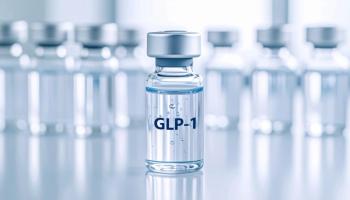
Should Pharmacists Be Given Expanded Dispensing Powers?
The FDA is considering giving pharmacists the power to dispense without a prescription certain medications that currently require a prescription.
Introduction
The range of health care providers empowered to prescribe medications includes nurse practitioners, physicians’ assistants, medical doctors, and DOs. There have also been rumors of pharmacists (considered to be the providers who know the most about medications) who want to get into the prescribing business as well.
Unlike some practicing pharmacists, I have never been a big supporter of extending full prescribing powers to pharmacists because I have not seen any plans that would add significant value beyond what other prescribers already provide. As a result, I have wondered about the future of pharmacy. However, a recent FDA discussion on new opportunities for pharmacies and pharmacists may have the potential to breathe new life into the pharmacy profession.
Pharmacist Intervention Drugs
The FDA recently looked at creating a new category of pharmacist intervention drugs. The agency put out a notice in the Federal Register (
Advantages
This new FDA initiative could provide a new avenue for pharmacists to directly connect with patients. It would eliminate the need for phone calls to prescribers for routine medications and allow the prescribers to concentrate on urgent matters that require their direct attention. It would also allow pharmacists to be more hands-on and develop the necessary relationship with their patients and enhance clinical partnerships.
Disadvantages
However, such interactions would likely require pharmacists to spend more time consulting with patients and to make clinical judgments beyond those that they currently make, thereby dramatically increasing pharmacists’ insurance costs and staffing needs.
Method of Operation
The FDA believes that some patient visits to traditional prescribers could be eliminated by making certain prescription medications available via pharmacists but with other conditions in place to ensure that the medications would be used safely and effectively. In some cases, a visit to a prescriber would be necessary for the initial prescription, but future refills could be authorized by pharmacists without a return visit. This could be useful for rescue medications such as inhalers for asthma or epinephrine for allergic reactions, which patients need to keep on hand for use in emergencies.
These conditions of safe use could include requiring pharmacist intervention to ensure appropriate non-prescription use. Additionally, the conditions could involve the use of innovative technologies, such as diagnostics approved by the FDA for use in the pharmacy or other setting.
New products that fall within these categories could lead pharmaceutical companies and life science companies to target pharmacists as the primary mode of affecting patient care.
Part 15 Hearing
The FDA held a Part 15 hearing on March 27, 2012, where they discussed a variety of issues, including:
- The types of technology and conditions of safe use
- What other types of conditions of safe use (eg, pharmacy monitoring or counseling) could be used to help ensure the safe and effective use of certain drug products as non-prescription products?
- Are there types of diagnostic aids that could be used in the non-prescription setting after appropriate FDA review, either with or without the aid of a pharmacist to diagnose or monitor a disease or condition?
- What data exists on conditions of safe use, including novel technologies, on their effects on health care, access to medication, and/or disease and treatment education or awareness?
- Is there data on how expanded access to medication or increased consumer education could affect patient or consumer behavior?
- What types of studies should be conducted to evaluate the effects of conditions of safe use on the safety and efficacy of particular drugs and on behavior and health outcomes?
- What types of studies should be conducted to evaluate the safety and efficacy of any technologies that might be relied upon as conditions of safe use?
Conclusion
Other countries, such as the UK, have products that are dispensed from behind the counter. I expect that the FDA will look at data from these other countries to evaluate their experiences. Several US-based groups, including the American Medical Association, have already expressed opposition to the idea of expanding pharmacists’ ability to dispense medications. (Click
Newsletter
Stay informed on drug updates, treatment guidelines, and pharmacy practice trends—subscribe to Pharmacy Times for weekly clinical insights.

















































































































































































































